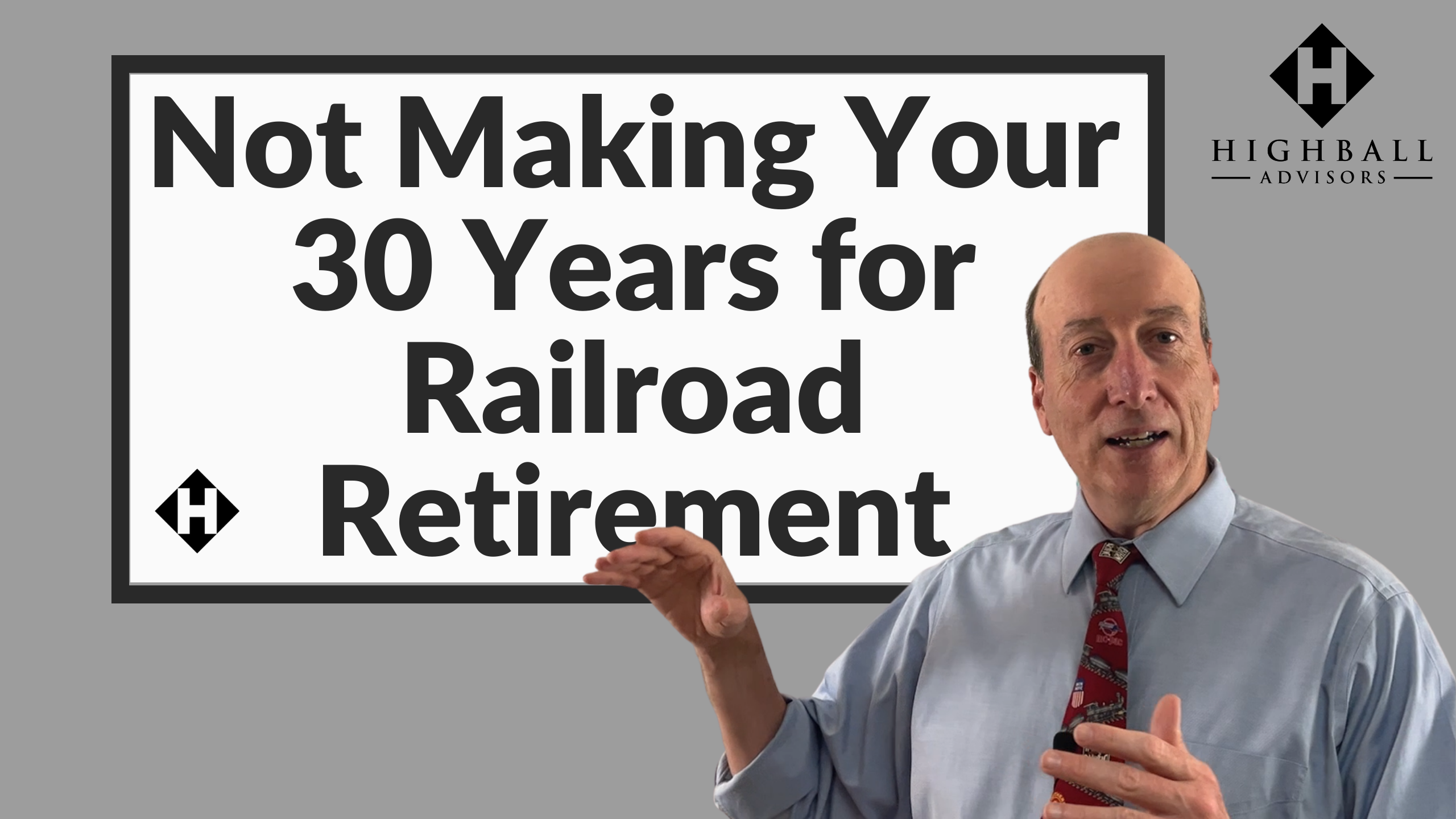
Not Making Your 30 Years for Railroad Retirement?
Tier 1 Tier 2 Video Retirement Financial PlanningTranscript:
Understand your reduced retirement benefits with less than 30 years of service.
Welcome everyone to another edition of the Highball Advisors Railroad Retirement Whiteboard. My name's John McNamara of Highball Advisors and today we're going to gear this towards those railroaders that are going to retire with less than 30 years of service. So maybe you came in late to the industry or perhaps you came in early and left early. So you just don't have the 30 years of railroad service, which is really a key number, and you can go through all my videos to explain why that's a big number.
What kind of discounts or penalties you might say, if you retire from the railroad without the 30 years of service and before your full retirement age? We're talking about age reductions. Everything's based off your full retirement age. Let's kind of walk through this, and hopefully this will give you ... What we want to talk about is full retirement age. If you're born 1960 or later, your full retirement age is 67. Basically, anybody born from 1954 before, it's 66, from '43 to '54, it's 66. So anybody between '54 and 1960, they just go by a couple months. It could be 66 and two months, 66 and four months, eight months, you get the idea. That's your full retirement age, so it's always important to understand your full retirement age.
Now, what's the earliest that you can start collecting your railroad retirement annuity if you have less than 30 years? That's at age 62, otherwise known as the annuity begin date. That's an important number. So you can always retire and you can retire at 58, 59, so if people say, "Oh, I'm retiring," well, you can't collect your annuity, which the annuity begin date, if you have less than 30 years until 62. Once again, the annuity, we're talking about the tier one and tier two portion of your annuity. That kind of gives you a little background.
Now, let's look at what kind of discounts that you would have to take if you want to retire early. The employee reduction, we'll just say 1960 or later and your full retirement is 67. If you retire at 62, 30% is going to be reduced off your tier one and tier two amounts. Then obviously it's oh... I'm sorry, this should be 25%. This is a 25% reduction on those before 1954 and beyond. All right. So that's that.
Now you remember for those railroaders that are married, you'll have a spousal age reduction. Their reduction is a little bit higher. Now, remember also spouses can't collect their retirement annuity until the railroader retires. All right. So their discount, if they want to turn theirs on at 62, based off the age again, is a 35% discount. So that's a little bit bigger and then it's 30% here. So those are really important numbers to understand.
Now it doesn't go 35% and then full retirement age. So every month, and I didn't want to get into the math, but every month that reduction gets smaller. Then as you get to your full retirement age and that's when you start your annuity. So it doesn't like, oh, I started my 62. Maybe it will be less at 62 and one month 60. No, once you start it, that number's set in stone and that's it. All right. Unless you turn off your annuity, that number's going to be with you for rest of your railroad retirement.
All right. So let's just go through an example of a reduction. So let's say a railroader here is going to have tier one of $3,000 a month and tier two at 1500 at full retirement age. So that's $4,500 a month coming in. Good retirement there. But if they say, well, I'm going to leave at 62 instead, which is their annuity begin date, that 4,500 goes down to 3,150, which is a 30% reduction. That number will only change because of inflation. They'll adjust it every year based off of inflation, but that's the baseline going forward. That's it. So you only get, I guess, one shot at picking it really to tell you the truth of when you want to retire.
So 67 would be 4,500. 62's, 31 50 and if you go hey, 63, 64, it's going to be somewhere in between there. All right and you can do the math on that. So I hope you found this video helpful. Really reach out to me, especially if you're nearing retirement. Go through that boarding for railroad retirement process. You really got to find out what that number's going to be if you're going to really plan a successful retirement. All right. So reach out to me on that and we can go through that. Also subscribe to my YouTube channel, click on the notification bell to get the latest video. Channel's been doing great, past 3000 subscribers. Very, very excited about that. So until next time everyone, please stay safe, stay on track and take care. So long everybody. Bye.
Get Free Railroad Retirement Assessment
Disclaimer: This article is provided for general information and illustration purposes only. Nothing contained in the material constitutes tax advice, a recommendation for purchase or sale of any security, or investment advisory services. Highball Advisors encourages you to consult a financial planner, accountant, and/or legal counsel for advice specific to your situation. Reproduction of this material is prohibited without written permission from Highball Advisors, and all rights are reserved from Highball Advisors, and all rights are reserved.
